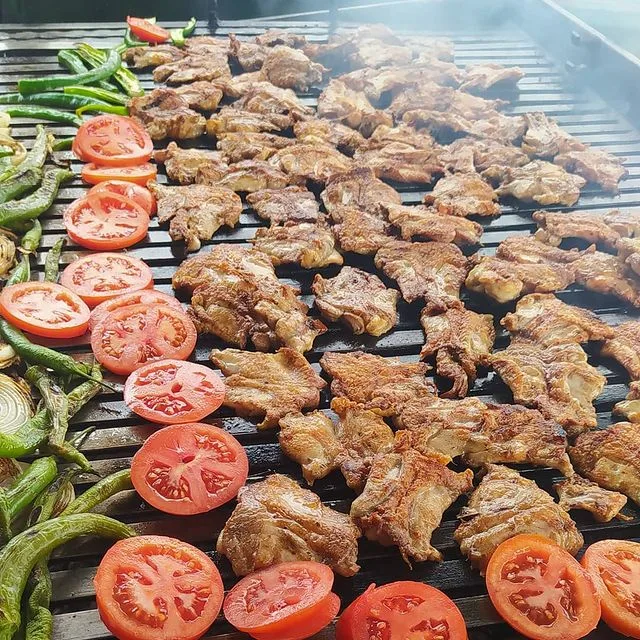Hunza Valley is not only famous for its breathtaking landscapes but also for its unique and wholesome cuisine. The food of Hunza Valley reflects the region’s rich culture, organic farming practices, and the simplicity of its people. This guide takes you on a culinary journey through Hunza Valley, highlighting traditional dishes, local ingredients, and the best places to eat.
The Essence of Hunza Valley Cuisine
Hunza Valley cuisine is characterized by its simplicity, nutritional value, and use of organic ingredients. Here’s what makes it special:
1. Organic Farming: The region is known for its organic fruits, vegetables, and grains.
2. Traditional Recipes: Passed down through generations, these recipes are a testament to the valley’s rich cultural heritage.
3. Health Benefits: Hunza food is often associated with the longevity and good health of its people.
Traditional Dishes of Hunza Valley
Here are some must try traditional dishes when visiting Hunza Valley:
1. Chapshuro
Description: A savory pastry filled with minced meat, onions, and spices.
Best Place to Try: Local bakeries and home kitchens.
2. Hunza Bread (Diram Fiti)
Description: A flatbread made from whole wheat flour, often served with butter or apricot oil.
Best Place to Try: Local homes and small eateries.
3. Harissa
Description: A hearty porridge made from wheat and meat, slow cooked to perfection.
Best Place to Try: Traditional restaurants in Karimabad.
4. Apricot Soup
Description: A sweet and tangy soup made from dried apricots.
Best Place to Try: Local cafes and guesthouses.
5. Burus Shapik
Description: A type of dumpling filled with a mixture of meat and vegetables.
Best Place to Try: Local family run restaurants.
Organic Fruits of Hunza Valley
Hunza Valley is renowned for its organic fruits, which are a staple in the local diet:
1. Apricots
Highlights: Fresh, dried, and used in various dishes.
Best Place to Buy: Local markets and roadside stalls.
2. Apples
Highlights: Crisp and juicy, often eaten fresh or used in desserts.
Best Place to Buy: Local orchards and markets.
3. Cherries
Highlights: Sweet and tart, perfect for snacking.
Best Place to Buy: Local markets during the cherry season.
4. Mulberries
Highlights: Used in traditional desserts and drinks.
Best Place to Buy: Local markets and homes.
Best Restaurants and Cafes in Hunza Valley
Here are some of the best places to enjoy Hunza Valley cuisine:
1. Cafe de Hunza
Highlights: Traditional dishes with a modern twist.
MustTry: Chapshuro and apricot soup.
2. Baltit Fort Cafe
Highlights: Stunning views and traditional Hunza dishes.
MustTry: Hunza bread and local teas.
3. Hunza Food Pavilion
Highlights: A variety of local and international dishes.
MustTry: Harissa and apricot based desserts.
4. Cafe Hunza
Highlights: Cozy ambiance and organic food.
MustTry: Fresh apricot juice and traditional pastries.
Food Culture and Dining Etiquette
Understanding the food culture and dining etiquette in Hunza Valley enhances your culinary experience:
1. Sharing Meals: Meals are often shared, reflecting the community oriented culture.
2. Organic Practices: Locals take pride in their organic farming methods.
3. Hospitality: Expect warm hospitality and generous servings.
4. Dining Etiquette: Always wash your hands before meals and eat with your right hand.
Tips for Enjoying Hunza Valley Food
Here are some tips to make the most of your culinary journey in Hunza Valley:
1. Try Local Specialties: Don’t miss traditional dishes like Chapshuro and Hunza bread.
2. Visit Local Markets: Explore markets for fresh fruits and organic products.
3. Ask for Recommendations: Locals are happy to suggest their favorite dishes and eateries.
4. Stay Hydrated: Drink plenty of water, especially if you’re not used to the altitude.
Sample Food Itinerary for Hunza Valley
Here’s a sample 3 day food itinerary for your trip:
Day 1: Arrival and Local Exploration
Breakfast: Hunza bread with butter and apricot jam at your hotel.
Lunch: Chapshuro at Cafe de Hunza.
Dinner: Harissa at a local restaurant in Karimabad.
Day 2: Exploring Traditional Dishes
Breakfast: Fresh apricot juice and pastries at Cafe Hunza.
Lunch: Burus Shapik at a family run restaurant.
Dinner: Apricot soup and Hunza bread at Baltit Fort Cafe.
Day 3: Organic Fruits and Farewell
Breakfast: Fresh fruits and local teas at your hotel.
Lunch: Traditional dishes at Hunza Food Pavilion.
Dinner: A mix of your favorite dishes from the trip.
Frequently Asked Questions (FAQs)
1. What is the most famous food in Hunza Valley?
Chapshuro and Hunza bread are among the most famous dishes.
2. Are there vegetarian options in Hunza Valley?
Yes, many traditional dishes like Hunza bread and apricot soup are vegetarian.
3. Where can I buy organic fruits in Hunza Valley?
Local markets and roadside stalls are the best places to buy organic fruits.
4. What is the best time to visit Hunza Valley for food lovers?
Spring and summer are ideal, as fresh fruits are in season.
5. Are there any food festivals in Hunza Valley?
While there are no major food festivals, local events often feature traditional dishes.
6. Can I learn to cook Hunza dishes?
Yes, some guesthouses and local families offer cooking classes.
7. What is the staple food of Hunza Valley?
Whole wheat bread and apricots are staples in the Hunza diet.
8. Are there any unique drinks in Hunza Valley?
Apricot juice and local teas are popular drinks.
9. Is Hunza Valley food spicy?
Hunza food is generally mild, with a focus on natural flavors.
10. What should I avoid eating in Hunza Valley?
Avoid unwashed fruits and untreated water to prevent stomach issues.
Conclusion
Hunza Valley offers a unique culinary experience that reflects its rich culture and organic farming practices. From traditional dishes like Chapshuro to the freshest organic fruits, the food of Hunza Valley is a feast for the senses. Use this guide to explore the flavors of Hunza and make the most of your culinary journey.






